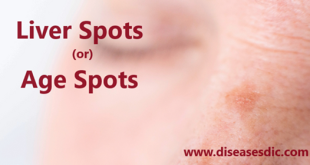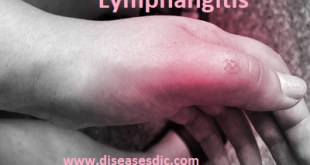What is Leptospirosis?
Leptospirosis is a rare bacterial infection we get from animals. It’s spread through their urine, especially from dogs, rodents, and farm animals. They may not have any symptoms, but they can be carriers.
In most cases, leptospirosis is unpleasant but not life-threatening, like a case of the flu. It rarely lasts more than a week. But about 10% of the time, when you have a severe form of leptospirosis, you’ll get better, but then get sick again. This is called Weil’s disease and it can cause much more serious issues, like chest pain and swollen arms and legs. It often requires hospitalization.
Types
There are two main types of leptospirosis.
Mild leptospirosis: This accounts for 90 percentTrusted Source of cases. Symptoms include muscle pain, chills, and possibly a headache.
Severe leptospirosis: Between 5 and 15 percent of cases can progress to severe leptospirosis. Organ failure, internal hemorrhaging, and death can result if the bacterium infects the liver, kidneys, and other major organs.
The Centers for Disease Control and Prevention (CDC) puts the fatality rate between 5 and 15 percent among those with severe illness.
With effective and timely treatment, leptospirosis is less likely to become severe.
Those more likely to develop severe leptospirosis tend to be those who are already sick, for example, with pneumonia, those under the age of 5 years, and those in older age.
Pathophysiology of Leptospirosis
Leptospires are thin, coiled, gram-negative, aerobic organisms 6-20 µm in length. They are motile, with hooked ends and paired axial flagella (one on each end), enabling them to burrow into tissue. Motion is marked by continual spinning on the long axis. They are unique among the spirochetes in that they can be isolated on artificial media.
Leptospires belong to the order Spirochaetales and the family Leptospiraceae. Traditionally, the organisms are classified based on antigenic differences in the lipopolysaccharide envelopes that surround the cell wall. Serologic detection of these differences, therefore, is based on identifying serovars within each species. Based on this system, the genus Leptospira contains two species: the pathogenic Leptospira interrogans, with at least 218 serovars; and the nonpathogenic, free-living, saprophytic Leptospira biflexa, which has at least 60 serovars.
Animal reservoirs
Most leptospiral serovars have a primary reservoir in wild mammals, which continually reinfect domestic populations. The organism affects at least 160 mammalian species and has been recovered from rats, swine, dogs, cats, raccoons, cattle, mongooses, and bandicoots. The most important reservoirs are rodents, and rats are the most common source worldwide. In the United States, important leptospiral sources include dogs, livestock, rodents, and wild animals.
Leptospirosis in animals is often subclinical. Leptospires may persist for long periods in the renal tubules of animals by establishing a symbiotic relationship with little or no evidence of disease or pathological changes in the kidney. As a result, animals that serve as reservoirs of host-adapted serovars can shed high concentrations of the organism in their urine without showing clinical evidence of disease.
Transmission and incubation
Urinary shedding of organisms from infected animals is the most important source of these bacterial pathogens. Contact with the organism via infected urine or urine-contaminated media results in human infection. Such media include contaminated water and food, as well as animal bedding, soil, mud, and aborted tissue. Under favorable conditions, leptospires can survive in fresh water for as many as 16 days and in soil for as many as 24 days.
Leptospires are believed to enter the host through the following:
- Abrasions in healthy skin
- Animal and rodent bites
- Sodden and waterlogged skin
- Mucous membranes or conjunctiva
- Lungs (after inhalation of aerosolized body fluid)
- The placenta during pregnancy
Virulent organisms in a susceptible host gain rapid access to the bloodstream through the lymphatics, resulting in leptospiremia and spread to all organs, but particularly the liver and kidney. The incubation period is usually 5-14 days but has been described from 72 hours to a month or more.
What causes leptospirosis?
The bacteria Leptospira causes leptospirosis. Bacteria get into your body through your mouth, nose or eyes or through breaks in your skin. They travel through your blood to your organs, collecting in your kidneys (the organ that “cleans” your blood).
Your kidneys get rid of unnecessary or toxic matter in your pee (urine). Bacteria from your kidneys leaves your body in your pee, which can spread leptospirosis to other people or animals.
Risk factors
Risk factors primarily include direct animal exposure or activities that can lead to skin abrasions and water or soil exposure.
Specific risk factors for infection include the following:
- Occupational exposure – Farmers, ranchers, abattoir workers, trappers, veterinarians, loggers, sewer workers, landscapers, rice farmers, pet traders, military personnel, laboratory workers
- Recreational activities – Freshwater swimming, canoeing, kayaking, trail biking, trekking, gardening
- Household exposure – Pet dogs, domesticated livestock, rainwater catchment systems, infestation by infected rodents
- Low socioeconomic status – Living in overcrowded urban areas with poor sanitation
- Travel to endemic areas (especially if travel occurs during or following heavy rainfall or flooding or involves high-risk activities) (see ‘Prevalence and geography’ above)
- Other – Walking barefoot through surface water, skin lesions, contact with wild rodents, accidental laboratory exposure
Signs and Symptoms
In humans, Leptospirosis can cause a wide range of symptoms, including:
- High fever
- Headache
- Chills
- Muscle aches
- Vomiting
- Jaundice (yellow skin and eyes)
- Red eyes
- Abdominal pain
- Diarrhea
- Rash
Many of these symptoms can be mistaken for other diseases. In addition, some infected persons may have no symptoms at all.
The time between a person’s exposure to a contaminated source and becoming sick is 2 days to 4 weeks. Illness usually begins abruptly with fever and other symptoms. Leptospirosis may occur in two phases:
- After the first phase (with fever, chills, headache, muscle aches, vomiting, or diarrhea) the patient may recover for a time but become ill again.
- If a second phase occurs, it is more severe; the person may have kidney or liver failure or meningitis.
The illness lasts from a few days to 3 weeks or longer. Without treatment, recovery may take several months.
Possible Complications of Leptospirosis
Complications may include:
- Jarisch-Herxheimer reaction when penicillin is given
- Meningitis
- Severe bleeding
How is Leptospirosis diagnosed?
Your healthcare provider diagnoses leptospirosis with a physical exam, blood tests and urine tests. Your provider will ask you about your symptoms, your travel history and whether you could’ve been in contact with anything contaminated. If you’re very sick, you may have a chest X-ray or CT scan.
What tests will be done to diagnose leptospirosis?
- Blood or urine tests. Your provider will get a blood sample from your arm with a small needle or you’ll pee in a cup for a urine sample. A lab will test the samples for signs of Leptospira.
- If you are showing signs of severe leptospirosis, your provider may use a chest X-ray, CT scan or other imaging. They’ll use a machine to take pictures of the inside of your body to look for damage to your organs.
How is Leptospirosis treated?
The best treatment depends on the severity. Options include:
Fluids and fever management
Mild cases of leptospirosis may be treated with simple remedies, such as:
- Drinking plenty of fluids
- Getting rest
- Taking over-the-counter pain relievers
Antibiotics
Antibiotics are medications designed to destroy harmful bacteria. The following antibiotics are used to treat leptospirosis:
- Doxycycline
- Azithromycin
- Amoxicillin
- Penicillin (for severe cases)
- Ceftriaxone (for severe cases)
For severe leptospirosis, antibiotics may be given intravenously.
Other medical therapies
If you have severe leptospirosis, you’ll need to be admitted to the hospital. That’s because severe cases affect multiple organs.
At the hospital, depending on your clinical condition and the severity, you may require additional medical interventions, such as:
- Dialysis
- Mechanical ventilation
- Vasopressors (medications to help support blood pressure)
How can I prevent Leptospirosis?
A vaccine for leptospirosis isn’t available in the U.S. The best way to prevent leptospirosis is by not swimming or wading in water that might have animal pee in it. This includes floodwaters. Other ways you can reduce your risk include:
- Taking preventative medication. If you’re traveling and at high risk for leptospirosis, ask your provider about taking medication to keep from getting sick (prophylaxis).
- Avoiding animals that could have leptospirosis.
- Wearing protective clothing and shoes if you work with or around animals.
- Wearing protective shoes and clothing if you have to be in contact with water or soil that might be contaminated with bacteria.
- Avoiding water sports and swimming in lakes and rivers after floods.
- Drinking only treated water. Don’t drink water from lakes, rivers and canals without boiling it first.
- Wearing gloves if you have to touch dead animals. Don’t touch them with your bare hands and wash your hands thoroughly afterwards.
- Covering open cuts or wounds with waterproof dressing.
 Diseases Treatments Dictionary This is complete solution to read all diseases treatments Which covers Prevention, Causes, Symptoms, Medical Terms, Drugs, Prescription, Natural Remedies with cures and Treatments. Most of the common diseases were listed in names, split with categories.
Diseases Treatments Dictionary This is complete solution to read all diseases treatments Which covers Prevention, Causes, Symptoms, Medical Terms, Drugs, Prescription, Natural Remedies with cures and Treatments. Most of the common diseases were listed in names, split with categories.








I want to make a good doctor